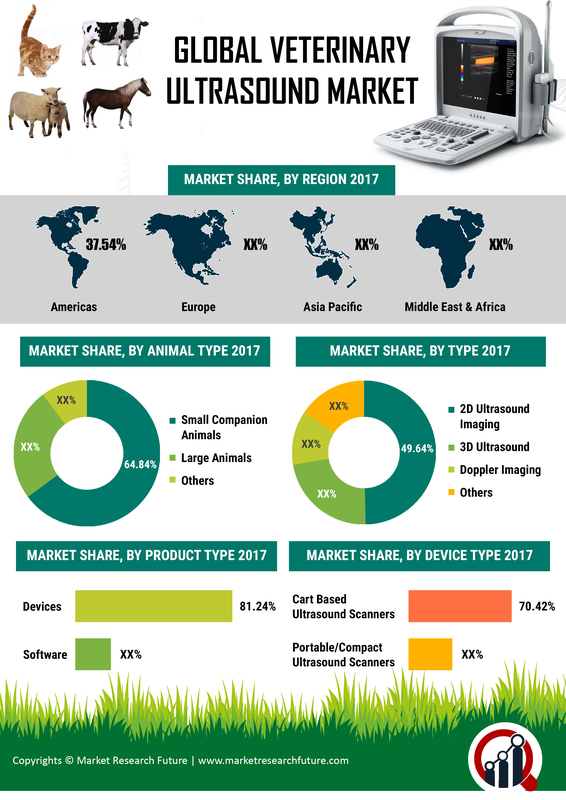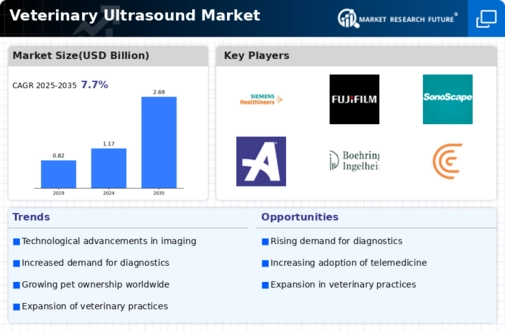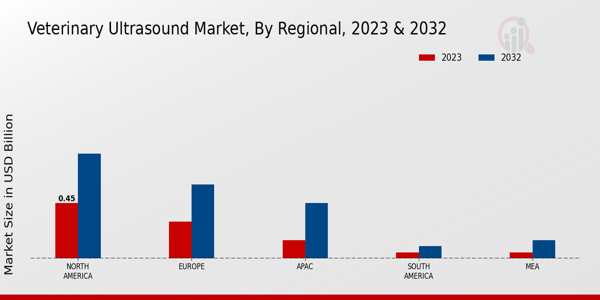Rising Pet Ownership
The Global Veterinary Ultrasound Market Industry is significantly influenced by the rising trend of pet ownership worldwide. As more households adopt pets, the demand for veterinary services, including diagnostic imaging, has surged. This trend is particularly pronounced in urban areas where pet owners seek high-quality healthcare for their animals. The increasing awareness of pet health and wellness has led to a greater emphasis on preventive care, driving the need for advanced diagnostic tools like ultrasound. Consequently, this growing pet ownership is expected to contribute to the market's expansion, with projections indicating a growth to 2.69 USD Billion by 2035.
Market Growth Projections
The Global Veterinary Ultrasound Market Industry is projected to experience substantial growth over the next decade. With a market value anticipated to reach 1.17 USD Billion in 2024 and further expand to 2.69 USD Billion by 2035, the industry is poised for significant development. The compound annual growth rate of 7.81% from 2025 to 2035 indicates a robust demand for veterinary ultrasound technologies. This growth is driven by various factors, including technological advancements, rising pet ownership, and increased veterinary expenditures. The market's trajectory suggests a promising future for veterinary ultrasound, reflecting the ongoing commitment to enhancing animal healthcare.
Technological Advancements
The Global Veterinary Ultrasound Market Industry is experiencing rapid growth due to continuous technological advancements in ultrasound equipment. Innovations such as portable ultrasound devices and advanced imaging techniques enhance diagnostic capabilities for veterinarians. These advancements not only improve the accuracy of diagnoses but also increase the efficiency of veterinary practices. For instance, the introduction of high-resolution imaging has allowed for better visualization of internal structures in animals, leading to more effective treatment plans. As a result, the market is projected to reach 1.17 USD Billion in 2024, reflecting the increasing adoption of these advanced technologies.
Regulatory Support and Standards
The Global Veterinary Ultrasound Market Industry is positively impacted by regulatory support and the establishment of standards for veterinary practices. Government agencies and veterinary associations are increasingly promoting the use of advanced diagnostic tools to improve animal health outcomes. This regulatory framework encourages veterinary practices to adopt ultrasound technology, ensuring that they meet the necessary standards for animal care. Additionally, the development of guidelines for the use of ultrasound in veterinary medicine fosters confidence among practitioners and pet owners alike. As a result, this supportive environment is expected to facilitate market growth and innovation in veterinary ultrasound.
Increased Veterinary Expenditures
The Global Veterinary Ultrasound Market Industry benefits from the rising expenditures on veterinary care. Pet owners are increasingly willing to invest in advanced diagnostic tools to ensure the health and well-being of their animals. This trend is supported by a growing understanding of the importance of early diagnosis and treatment, which can prevent more severe health issues and associated costs. As veterinary practices adopt more sophisticated ultrasound technologies, the market is likely to experience a compound annual growth rate of 7.81% from 2025 to 2035. This increase in spending reflects a broader commitment to animal health and welfare.
Growing Awareness of Animal Health
The Global Veterinary Ultrasound Market Industry is also driven by the growing awareness of animal health issues among pet owners and veterinarians. Increased education and outreach efforts have highlighted the importance of regular health check-ups and early detection of diseases. This awareness has led to a higher demand for diagnostic imaging services, including ultrasound, as veterinarians seek to provide comprehensive care. Furthermore, the integration of ultrasound in routine examinations is becoming more common, which may enhance the overall quality of veterinary care. This shift in focus towards proactive health management is likely to bolster market growth in the coming years.























